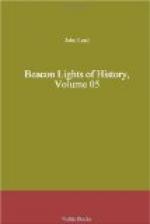The Organum (philosophy of first principles) of Aristotle was first publicly taught in 1215. This was certainly in advance of the seven liberal arts which were studied in the old Cathedral schools,—grammar, rhetoric, and dialectic (Trivium); and arithmetic, geometry, music, and astronomy (Quadrivium),—for only the elements of these were taught. But philosophy and theology, under the teaching of the Scholastic doctors (Doctores Scholastici), taxed severely the intellectual powers. When they introduced dialectics to support theology a more severe method was required. “The method consisted in connecting the doctrine to be expounded with a commentary on some work chosen for the purpose. The contents were divided and subdivided, until the several propositions of which it was composed were reached. Then these were interpreted, questions were raised in reference to them, and the grounds of affirming or denying were presented. Then the decision was announced, and in case this was affirmative, the grounds of the negative were confuted.”
Aristotle was made use of in order to reduce to scientific form a body of dogmatic teachings, or to introduce a logical arrangement. Platonism, embraced by the early Fathers, was a collection of abstractions and theories, but was deficient in method. It did not furnish the weapons to assail heresy with effect. But Aristotle was logical and precise and passionless. He examined the nature of language, and was clear and accurate in his definitions. His logic was studied with the sole view of learning to use polemical weapons. For this end the syllogism was introduced, which descends from the universal to the particular, by deduction,—connecting the general with the special by means of a middle term which is common to both. This mode of reasoning is opposite to the method by induction, which rises to the universal from a comparison of the single and particular, or, as applied in science, from a collection and collation of facts sufficient to form a certainty or high probability. A sound special deduction can be arrived at only by logical inference from true and certain general principles.




